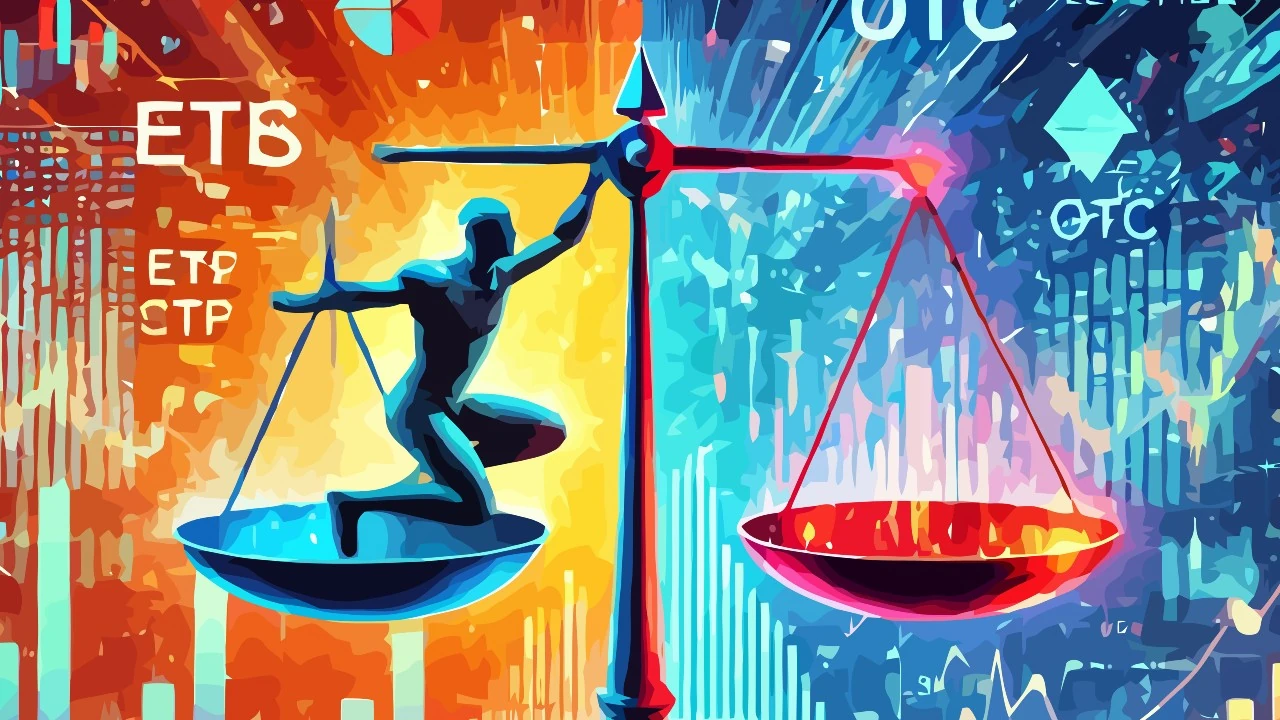Leveraged positions represent an interesting opportunity for investors who want to amplify their gains (or unfortunately losses) in the financial markets. Two very popular methods of gaining leveraged exposure are Exchange Traded Products ( ETPs ) and Over-The-Counter ( OTC) positions .
In this article we analyze the differences between these two strategies, highlighting their advantages and disadvantages.
Disclaimer:
The information provided does not constitute a solicitation for the placement of personal savings. The use of the data and information contained as support for personal investment operations is at the complete risk of the reader.
#1. Leverages
The purpose of leverage is to increase profits if the price of a certain asset moves in the chosen direction. But, if the price moves in the opposite direction, instead of increasing profits, losses will be amplified .
Below is an example table showing different leverages and their margin limits based on an initial investment of EUR 10,000 and an underlying price of EUR 100.
| Leverage | Leveraged Amount | Relative Opposite Variation Limit | Absolute Opposite Variation Limit |
|---|---|---|---|
| 2x | 20.000 EUR | ±50% (1/2) | ±50 EUR |
| 3x | 30.000 EUR | ±33% (1/3) | ±33 EUR |
| 5x | 50.000 EUR | ±20% (1/5) | ±20 EUR |
| 10x | 100.000 EUR | ±10% (1/10) | ±10 EUR |
| 100x | 1.000.000 EUR | ±1% (1/100) | ±10 EUR |
Let’s examine in detail a random case: for example the 5x leverage. Tizio, with an initial investment of 10,000 EUR will operate as if he had 50,000 EUR, betting on the increase (long, opposite of short) of the price of A, which has an initial price of 100 EUR.
Favorable and unfavorable scenarios
Now, if the price of A increases by 10%, Tizio will obtain a profit of 50,000 EUR * +0.1 = +5,000 EUR, while, if he had not used leverage, this profit would have been limited to +1,000 EUR. Thanks to leverage, therefore, the profit will be +50% of the initial investment with only the +10% variation of A.
If, however, the price of A decreases, the scenario will be the opposite. If the price decreases by 10%, Tizio will have a loss of 50,000 EUR * -0.1 = -5,000 EUR, or -50% of the amount initially invested.
However, if the price were to decrease by 20% compared to the initial one, not only would the loss amount to 100% of the amount initially invested, but, in the event of failure to pay additional funds as margin (guarantee) by the investor, his position will be closed. This will result in the total loss of the initial investment.
Other factors to consider
In essence, potential gains and losses are closely related to the strength of the leverage employed. Yes, I know what is going through your head…
If it were believed that it was impossible for a good to fall below a certain price, why not use a lever proportionate to our deduction?
The problem is that leverage is not free. In fact, each leverage corresponds to a loan and each loan corresponds to interest. Again, the stronger the leverage, the higher the interest to be paid over time.
Furthermore, it is better that leveraged positions are used for as short a period as possible. In fact, if the price of the underlying asset were to sideline for too long and with pronounced highs and lows, our investment will erode all the more quickly the more pronounced the leverage is.
The most common ways to leverage are through ETPs and OTC positions.
#2. Leveraged ETPs
Leveraged ETPs are financial instruments traded on the exchange that allow you to amplify the performance of an underlying through a pre-established multiplier (almost always 2x or 3x ). ETPs can be ETNs (Exchange Traded Notes), ETFs (Exchange Traded Funds) or ETCs (Exchange Traded Commodities).
They have the following advantages:
- Regulated access: Since ETPs are traded on exchanges, they are subject to stringent regulations,
- Ease of use: can be bought and sold like any other stock or exchange-traded fund, without the need for margin,
- Reduced Counterparty Risk: The presence of a solid issuer ensures greater transparency.
But at the same time there are disadvantages such as:
- Compounding effect: in the long term, daily leverage can create significant deviations from the underlying performance. Forgive me for using the English word “compounding”, but it cannot be translated with the same effect in Italian,
- High management costs: Leveraged ETPs may have higher fees than direct investments,
- Less flexibility: They do not allow advanced strategies such as leverage customization.
#3. Leveraged OTCs positions
Leveraged OTC (Over-The-Counter) positions are operations carried out directly with an intermediary (broker), without going through the regulated market. These instruments include: CFDs (Contracts for Difference), custom options and futures on margin.
They have the following advantages:
- Greater flexibility: the investor can choose the desired leverage and adapt the position to his needs. Unlike leveraged ETPs, multipliers are not pre-set and can even reach 100x,
- Hedging capabilities: Can be used in advanced hedging strategies,
- Potentially lower costs: In some cases, commissions are reduced compared to ETPs.
But at the same time there are disadvantages such as:
- Counterparty risk: The intermediary is the only counterparty, increasing the risk in the event of insolvency,
- Less transparency: prices do not always perfectly follow the underlying due to the difference in quotation (spread) applied by the intermediary,
- Margin requirement: the investor must deposit collateral. In the event of a margin call, i.e. when the limit threshold for the collateral provided approaches, he must deposit additional funds, under penalty of closing the position with the loss of all the money.
#4. Direct comparison
| Characteristic | Leveraged ETPs | Leveraged OTC Positions |
|---|---|---|
| Regulation | High | Limited |
| Flexibility | Low | High |
| Counterparty risk | Bass | High |
| Costs | High for management | Variables (depends on the intermediary) |
| Use for coverage | Limited | Ample |
| Compounding effect | Yes | No |
| Margin Call | No | Yes |
- Leveraged positions through ETPs are more suitable for investors who prefer regulated instruments, easy to trade and with lower counterparty risk. However, high management costs and the compounding effect can penalize in the long run.
- Leveraged positions via OTC offer greater flexibility and customizable tools, ideal for advanced trading and hedging strategies. However, they come with higher risks, less transparency and the need to manage margin.
Another aspect to consider is the investor’s time horizon. Leveraged ETPs are generally more suitable for short-term strategies , since the leverage is recalculated daily and the compounding effect alters their performance over time. OTC positions, on the other hand, can be used both in the short and long term, depending on the management of the leverage and the strategy adopted.
From the point of view of operational risk, OTC positions are more exposed to problems related to the solidity of the intermediary and to variations in the margins required. ETPs, being regulated instruments, offer greater operational security but with less flexibility in adjusting the leverage.
Finally, the investment strategy influences the choice between these instruments. Leveraged ETPs are suitable for those who want a simplified and prepackaged exposure, while OTC positions are more suitable for experienced traders who want to customize every aspect of the investment.











Leave a Reply